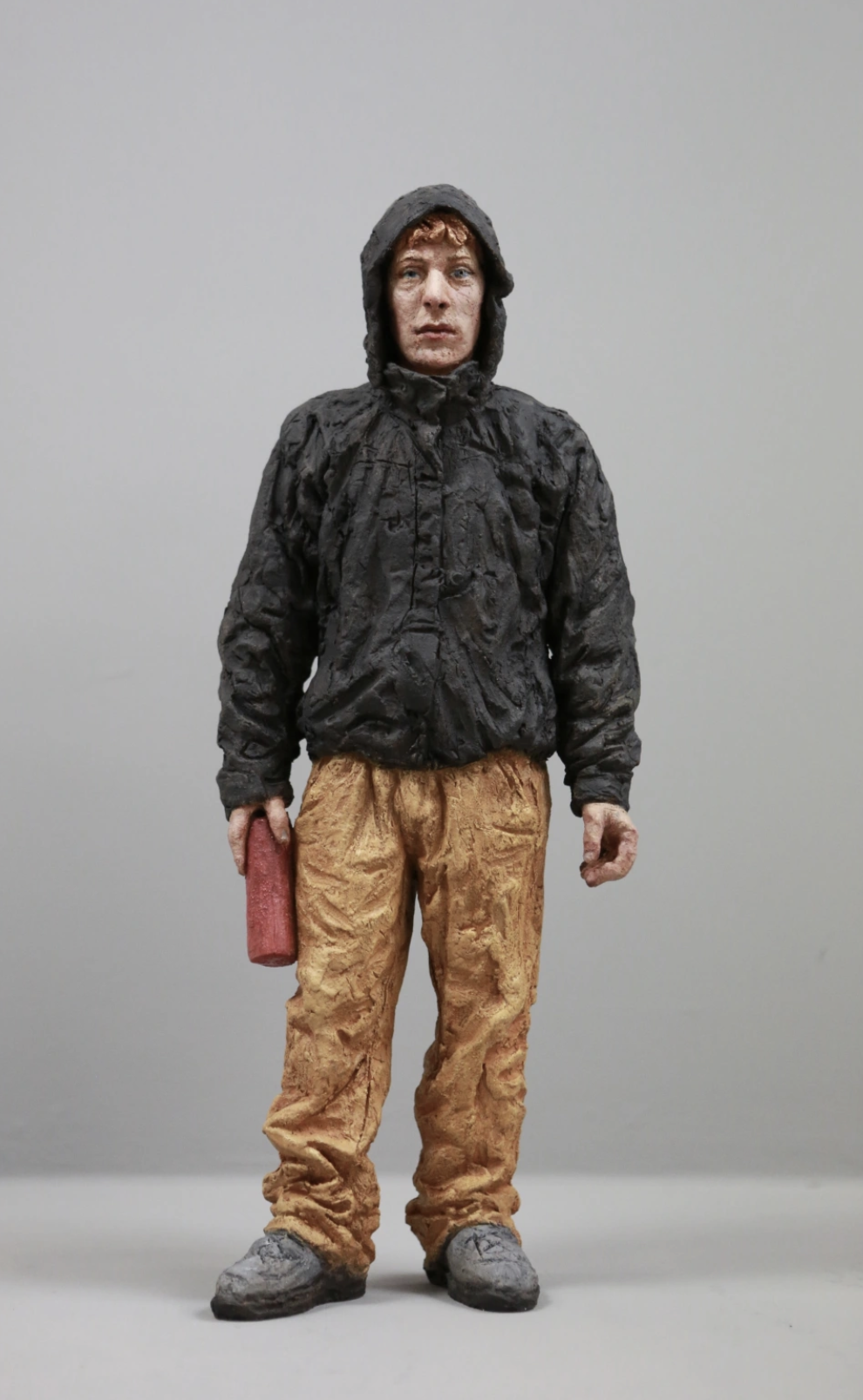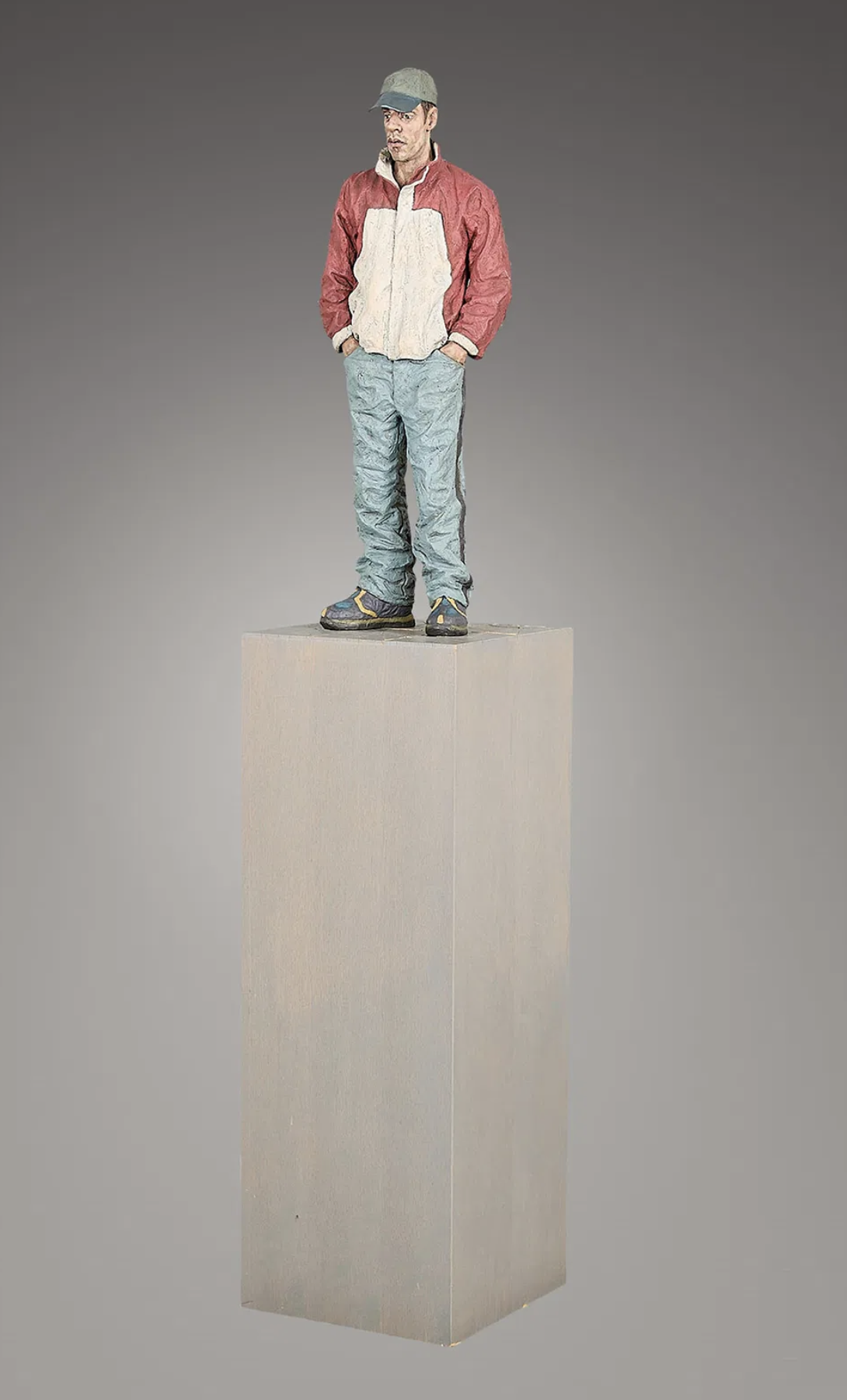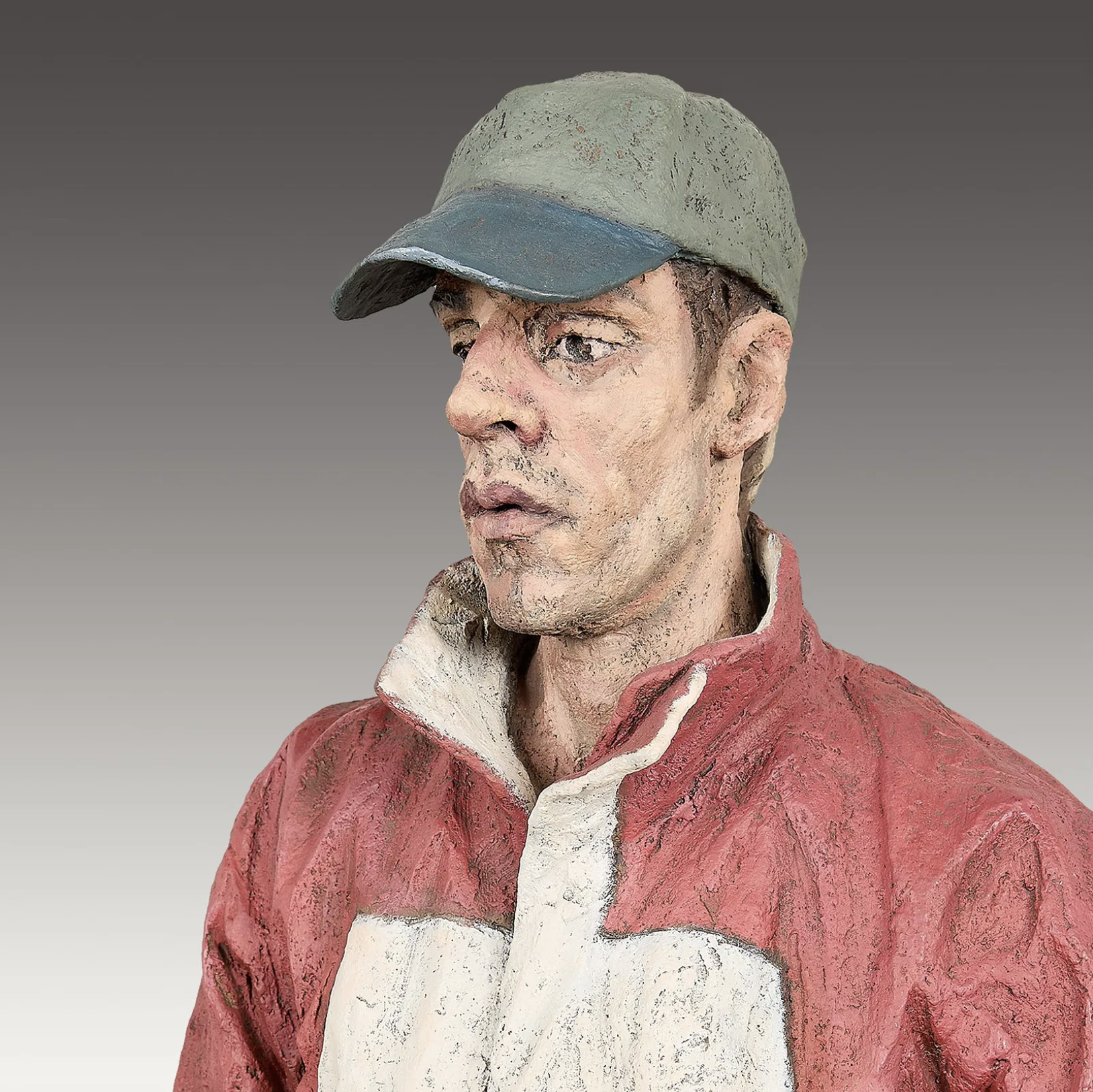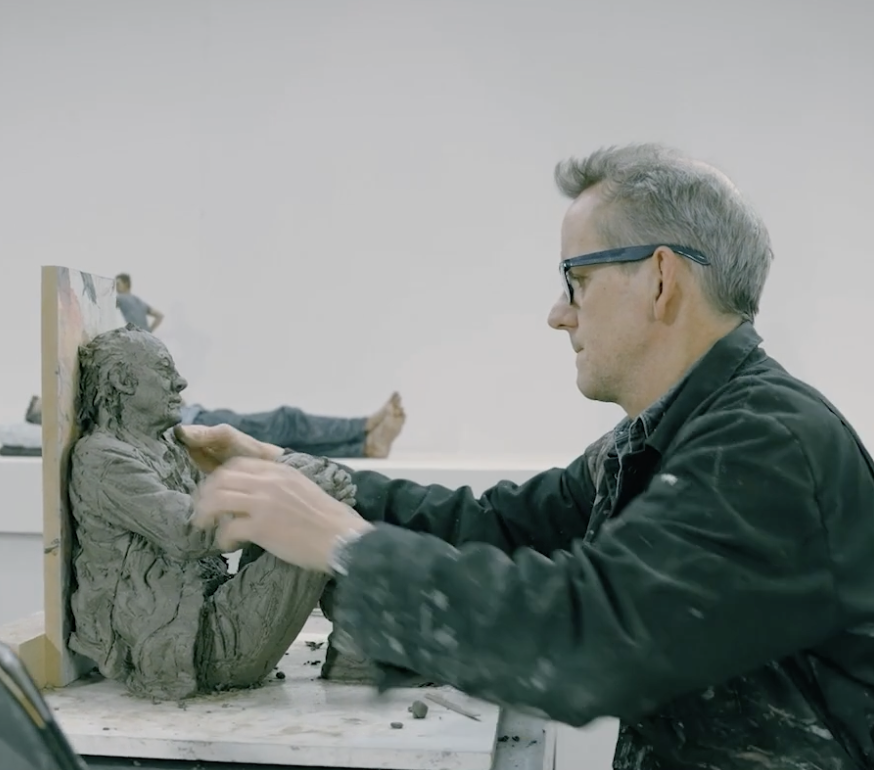Sean Henry
Sean Henry (born in England, 1965) graduated in ceramic sculpture in Bristol in 1987 and had his first exhibition in London in 1988. His nearly (but never quite) life-size sculptures of human beings are more mundane than monumental. They’re expressive but expressionless, individuated yet general. They engage in activities no more strenuous or distinctive than walking or sleeping, thereby passively playing out the latest act in the drama of postwar art. Meanwhile, they invite – and even beg – myriad comparisons to the work of other artists, present and past. One by one these statues reveal a latent pathos in their faces and stances, and come to define the artist’s distinctive sensibility. Each piece takes on a personality of its own. In the great Western tradition, Henry emphasizes the reality of human emotion. He also clothes his figures in such a way that identifies their social class, drawing viewers into an awareness of their perception of who they are looking at.
Even so, the viewer thinks of seemingly infinite art-historical parallels and influences. Henry’s sculptures are reminiscent of Stephan Balkenhol’s rough-hewn figurines, as well as the waxwork people of Duane Hanson and George Segal’s obdurate ghosts. They also suggest a British sensibility such as that found in the fleshy, painterly realism of Leon Kossoff and Lucian Freud. The list goes on and on. But after a point, one might say, the more influences an artist evinces, the more original he or she actually is.
Henry’s public works include Walking Man in London’s Holland Park (2000), Man With Potential Selves in Newcastle-Upon-Tyne (2003) and Walking Woman (2008) editions of which can be found in London, Oslo, Bad Homburg and Colchester, Essex (2017). He completed the UK’s first permanent offshore sculpture Couple in 2007, a critically acclaimed 13m high by 20m wide sculpture located 300 meters off the coast of Northumberland. More recent permanent installations include Standing Man in Stockholm (2010), Lying Man at the Frederik Meijer Gardens and Sculpture Park in Michigan, USA (2011) and Seated Figure a 3 meter high sculpture located in the North York Moors National Park (2017).
Henry was the first sculptor to win the Villiers David Prize in 1998, and has had more than 30 solo shows during his career. His work is regularly exhibited by galleries in London, New York, Stockholm, Bad Homburg, and Brussels, and his sculptures can now be found in public collections in the UK, Sweden, Norway, Germany, USA and elsewhere. Career highlights include Conflux – a solo exhibition of 22 figures held in 2011 at Salisbury Cathedral, Wilthsire which was seen by more than 100,000 people during its four month run. In 2015 he was commissioned by the National Portrait Gallery in London to create a painted bronze sculpture of Sir Tim Berners Lee, the founder of the World Wide Web. Two books on Sean Henry’s work have been published by Scala Publishers.
Sean Henry Artwork

Sean Henry, Drift, 2023, Ceramic and Oil paint, 20" x 8" x 6"

Sean Henry, Nobody's Wedding, 2000, bronze and oil paint, 4/5, 42" x 15" x 15"



